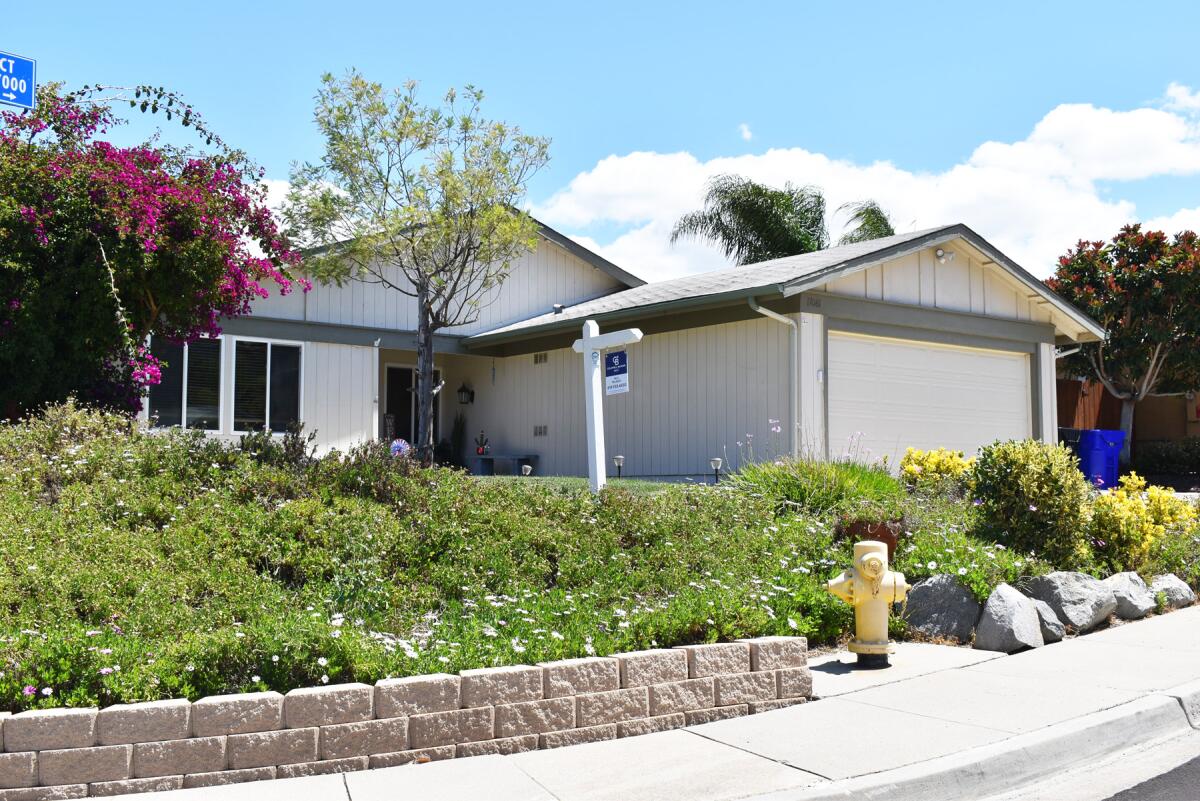California has already run out of cash to help first-time home buyers. Here’s what happened

- Share via
You may have seen the videos on TikTok promising something that sounds too good to be true: Free cash from the state of California to help you buy your first home. The good news is, that program actually exists! The bad news is, it’s already out of money.
The California Housing Finance Agency launched the California Dream for All Shared Appreciation loan program two weeks ago, offering qualified first-time buyers up to 20% of the purchase price of a house or condominium. The help was available only to households whose earnings were below CalHFA’s income limit, which is $180,000 in Los Angeles County and $235,000 in Orange County.
State lawmakers had set aside $500 million for the program as part of the 2022-23 budget. But a looming fiscal shortfall led Gov. Gavin Newsom to propose a 40% cut, so when CalHFA launched the program late last month, it was allocated only $300 million and expected to assist about 2,300 home buyers.
On Friday, the CalHFA website announced that all the funds “have been reserved.” If you’re not already in the pipeline for a loan, you’re out of luck — at least for now.
More funds will be available to the program at some point, said Kathy Phillips, CalHFA’s director of communications. “However, we cannot predict whether that will be in the coming months with an additional allocation [from the state budget], or in the coming years as repayments of these original loans come back to be recycled to help additional households,” Phillips said.
She emphasized, “The program was designed to recycle [money for loans]; however, that will not begin until these loans are repaid.”
To be alerted when the program starts up again, sign up for CalHFA updates on the agency’s website.
How it works
The program was unusual in terms of both its structure and the type of loan issued.
The loan, which can be used for a down payment and closing costs, is structured as a second mortgage, which means it isn’t repaid month by month. Nor does it accrue interest the way an ordinary loan does. Instead, when the mortgage is refinanced or the house is sold again, the borrower pays back the original amount of the loan plus 20% of the increase in the home’s value.
If the home is ultimately sold for the same amount it was purchased for or less, the buyer won’t need to pay the additional 20%.
With this type of loan, the effective interest rate is equal to the average annual increase in the home’s value. That’s been about 5% in California over the long term, but the increase varies widely on a year-to-year basis, according to the CalHFA.
“For example, in 2008, real estate values plunged by 35%,” the agency stated. “Conversely, real estate values spiked nearly 40% between 2020 and 2021.”
There is a cap on the amount of the appreciation owed. No matter how much the home increases in value, the borrower will need to pay at most 2.5 times the original loan amount.
To receive a loan, borrowers must complete a home buyer education and counseling course (there are options for online and in-person classes on the CalHFA site) and a free online course specifically for shared appreciation loans.
The other unusual feature is that the program is designed to replenish itself. The loans are “revolving,” which means that when a borrower repays the loan, the money can be loaned again to a new borrower.
CalHFA doesn’t make the loans directly; instead, they are made through private lenders authorized by the state.
Jon Healey, senior editor for the Utility Journalism Team, contributed to this report.
About The Times Utility Journalism Team
This article is from The Times’ Utility Journalism Team. Our mission is to be essential to the lives of Southern Californians by publishing information that solves problems, answers questions and helps with decision making. We serve audiences in and around Los Angeles — including current Times subscribers and diverse communities that haven’t historically had their needs met by our coverage.
How can we be useful to you and your community? Email utility (at) latimes.com or one of our journalists: Jon Healey, Ada Tseng, Jessica Roy and Karen Garcia.
More to Read
Sign up for Essential California
The most important California stories and recommendations in your inbox every morning.
You may occasionally receive promotional content from the Los Angeles Times.











